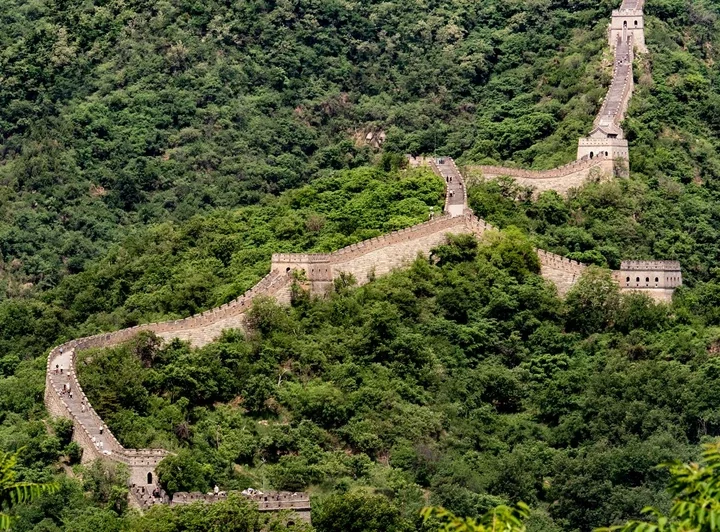A PARADISE island is plagued by killer fauna, shipwrecks and brutal dingo attacks - but it's so popular that you need a permit to visit.
Built over hundreds of thousands of years, K'Gari's sand dunes, long stretches of beaches, and crystal-clear lakes hide a dark & deadly past.





Formally known as Fraser Island, K'Gari is located off the coast of Australia.
Considered to be the world's largest sand island, it is littered with shipwrecks and prowled by ravenous dingoes - with war and death plaguing the cursed isle.
Despite it's dark history, it is wildly popular - with visitors having to book months in advance.
And only four-wheel-drive vehicles are allowed to drive on the sand island.
A Hervey Bay Tourist Information spokesperson told The Sun: "You need a high-clearance/low-range four-wheel-drive vehicle to get around the island.
"It is all sand tracks and beach driving."
They said tourism has also boomed over the past 10 years - with £30 permits now needed to access the island.
The sandy island even played its part in World War II, when it was used as a commando base.
A specialist reconnaissance and sabotage unit, dubbed Z Special Unit, used the island for training.
Boy, 2, mauled by a dingo at popular campsite in Australia
Relics of the unit, including flooring from the camp HQ, rusted truck parts and foxholes can still be seen as a reminder of the island's past.
The wild animals on the island are deadly - and could kill you.
While K'Gari Island boasts more than 150 miles of clear sandy beaches swimming in the ocean could be fatal- especially on the eastern coast - due jellyfish and great whites sharks.
And dingoes - known as Wongari on the island - also roam the island, frequently attacking visitors and even mauling a child to death.
In June last year, a dingo bit a sunbather's bum while she relaxed on the beach - just weeks before a ten-year-old boy was dragged into the sea by one of the animals.
He was miraculously saved when his brave sister intervened - but still suffering horror puncture wounds, scratches and bruises.
Rangers believe the large predators no longer fear humans.
Speaking to ABC News Australia, ranger Linda Behrendorff said: "From deliberately feeding, to calling animals over to try and get their photos, and even pushing their kids in the path of a dingo to get those photos; it's extremely inappropriate."
She said feeding or interacting with dingoes reduced their fear of humans.
"Once they get familiar with something, or there's always food in that esky, or 'if I go to this campsite, I'm always going to get something', you're pretty much training that animal," she explained.



In 2001, two vicious dingoes attacked and killed nine-year-old Clinton Gage and severely injured his brother on the island.
The incident led to the culling of 31 dingoes.
In August, a four-year-old girl was bitten by the apex island predator.
The little girl was with a fishing group when a dingo grabbed her around the chest area, causing cuts, bruising and a puncture wound.
Rangers said a nearby doctor examined the girl, and rangers advised the family to meet with Queensland Ambulance Service paramedics.
Meanwhile, a young boy and a man were bitten by a dingo at the start of the year.
The boy was bitten at a campsite on the western side of K'gari in February, while a man was bitten on the back of his leg while standing next to his car in January.
Two children were also attacked in January.
There have been 16 high-risk dingo interactions recorded on the island this year.


Everything you need to know about dingoes

Dingoes are a common site on K'Gari Island and parts of Australia. Here's what you need to know about them:
The Indigenous name for dingoes on K'Gari Island is Wongari. They are a natural and important part of the ecosystems on K'gari and should not be fed.
Dingoes are normally golden sandy colour with white markings on their tails, chest, and feet. Juvenile dingoes have black markings which disappear as they age.
Adult dingoes on K'gari stand more than 2ft high, about 4 ft long and have an average weight of around 39lbs.
Unlike domestic dogs, dingoes don't bark but howl like wolves. Packs often howl in a chorus, which may be more intimidating to other packs.
Dingoes are most active at dawn and dusk, when they hunt for food alone or in small packs.
K'gari dingoes are protected. Due to the remoteness of the island, they have the ability to become the purest strain of dingo, as domestic dogs are banned on the island.
The island is notorious for its shipwrecks, with K'Gari claiming 23 ships between 1856 and 1930.
The first documented wreck on the island was The Seabelle.
The 158-ton ship left Rockhampton in Queensland on March 7, 1857, and was wrecked the following day on Breaksea Spit, the island's northeastern tip.
Another ship that ran afoul of K'Gari was The Sterling Castle.
The ship was en route from Sydney to London when it struck a coral reef just north of the island on May 22, 1836.
A longboat containing a crew, Captain James Fraser and his wife Eliza landed on the island.
The island was named after him by European settlers in 1847 - before it reverted to its indigenous name in 2023.
When the longboat came ashore, the party split, half walking south before being rescued by hunters from the Moreton Bay settlement.
The other party lived with the Aborigines for seven weeks - during which time Captain Fraser died.
Eliza and three survivors were rescued after a party set out from Brisbane.
RUSTED REMAINS
Yet the most famous and most photographed shipwreck is the SS Maheno.
Built in Scotland in 1905, the SS Maheno now lies on K'Gari Island after it was wrecked there in 1935.
The rusted remains are a popular tourist attraction on the island.
The former luxury cruise liner first sailed the route between Sydney and Auckland for several years as a luxury cruise liner before joining the war effort.
In 1915, the SS Maheno arrived at the naval base in Gallipoli on August 25. She was converted into a hospital vessel, and faithfully carried war casualties from Gallipoli to Malta.
Following the Gallipoli campaign, she was sailed to the UK where her life-saving duties continued.
The ship carried the wounded from the battlefields of France, including the battle of the Somme to the safety of England.
After the war, the SS Maheno eventually returned to her regular route between Australia and New Zealand.



By 1935, new diesel engines were taking over, and the Maheno was sold for scrap metal to a shipbreaker in Japan.
During her journey from Australia to Japan, the ship and eight sailors on board were cast adrift in the middle of a massive storm.
They were not discovered until three days later, found stranded on the coast of the island.
Despite attempts, she could not be refloated. The rusted ship now calls the island her final resting place.
Rangers explained how one of the most popular spots on the island is Lake McKenzie - partly due to the crystal clear waters.
"The lakes, especially Lake McKenzie, Eli Creek and the Maheno Shipwreck, are probably the most visited locations on the island," a spokesperson said.
The popular Australian holiday destination hot spot receives up to 500,000 visitors each year, but only 152 permanent residents live on the island paradise.
The Queensland Government officially changed the island's name from Fraser Island to K'Gari Island in July 2023.
The name comes from the traditional owners of the land, the Butchulla people.





















Comments